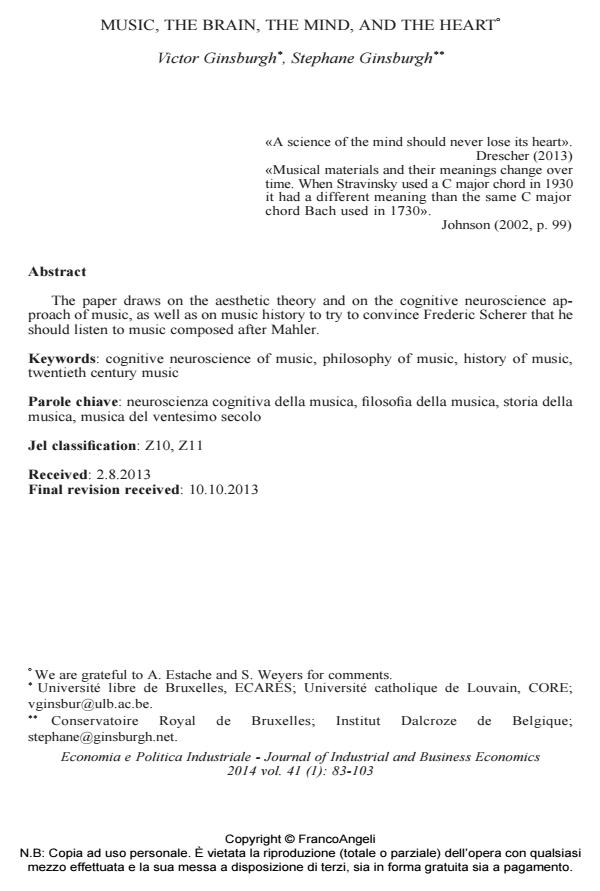Music, the brain, the mind, and the heart
Titolo Rivista ECONOMIA E POLITICA INDUSTRIALE
Autori/Curatori Victor Ginsburgh, Stephane Ginsburgh
Anno di pubblicazione 2014 Fascicolo 2014/1
Lingua Inglese Numero pagine 21 P. 83-103 Dimensione file 71 KB
DOI 10.3280/POLI2014-001005
Il DOI è il codice a barre della proprietà intellettuale: per saperne di più
clicca qui
Qui sotto puoi vedere in anteprima la prima pagina di questo articolo.
Se questo articolo ti interessa, lo puoi acquistare (e scaricare in formato pdf) seguendo le facili indicazioni per acquistare il download credit. Acquista Download Credits per scaricare questo Articolo in formato PDF

FrancoAngeli è membro della Publishers International Linking Association, Inc (PILA)associazione indipendente e non profit per facilitare (attraverso i servizi tecnologici implementati da CrossRef.org) l’accesso degli studiosi ai contenuti digitali nelle pubblicazioni professionali e scientifiche
The paper draws on the aesthetic theory and on the cognitive neuroscience approach of music, as well as on music history to try to convince Frederic Scherer that he should listen to music composed after Mahler.
Parole chiave:Neuroscienza cognitiva della musica, filosofia della musica, storia della musica, musica del ventesimo secolo
Jel codes:Z10, Z11
- History, statistics and theory: Frederic M. Scherer and modern industrial organization Giovanni B. Ramello, Francesco Silva, in ECONOMIA E POLITICA INDUSTRIALE 1/2014 pp.5
DOI: 10.3280/POLI2014-001001
Victor Ginsburgh, Stephane Ginsburgh, Music, the brain, the mind, and the heart in "ECONOMIA E POLITICA INDUSTRIALE " 1/2014, pp 83-103, DOI: 10.3280/POLI2014-001005